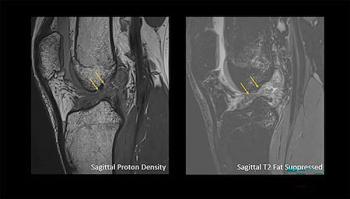
MRI Shows Cerebral Small Vessel Disease Common in Young Stroke Patients
Images reveal hypertension can be significant risk factor for CSVD.
Cerebral small vessel disease (CSVD) is typically associated with older stroke patients, but as stroke incidence increases in younger adults, concern is growing for the 18-to-45-year-old population.
In a virtual poster presentation during the International Society for Magnetic Resonance in Medicine virtual meeting, a team from the First Affiliated Hospital of Dalian Medical University in Beijing, China, discussed the frequency of CSVD in non-elderly patients and the risk factors that could be associated with it.
“CSVD is considered to be a common manifestation of senile cerebrovascular disease and has a clear correlation with clinical symptoms and characteristics,” wrote the team led by Yuhan Jiang. “At the present, limited studies are available for investigating the CSVD in young patients with cerebral infarction.”
To make this determination, the team evaluated 111 patients with cases of primary acute stroke. The patient population included 54 young patients with an average age of approximately 38 and 57 older stroke patients with an average age of nearly 69. All patients underwent routine MR sequences and diffusion-weighted imaging on a 1.5T scanner. They assessed each patient for enlarged perivascular space, iacunar infarction, white matter hyperintense, cerebral microbleeds, and brain atrophy to determine each patient’s CSVD total burden score (TBS). These scores, which may fully reflect the overall impact on the brain, were compared to the results of a healthy cohort.
According to their evaluation, there were significant differences between the groups. The TBS score for the young stroke patients was significantly higher than the control group, the team said, while simultaneously being significantly lower than the older stroke group. They also determined smoking was an influencing factor for cerebral microbleeds, and hypertension influenced enlarged perivascular spaces.
“This study showed hypertension might be the strongest vascular risk factor for CSVD,” they said. “Thus, cautions shall be paid for hypertension in [the] young group for prevention of CSVD at older age.”
Newsletter
Stay at the forefront of radiology with the Diagnostic Imaging newsletter, delivering the latest news, clinical insights, and imaging advancements for today’s radiologists.




























